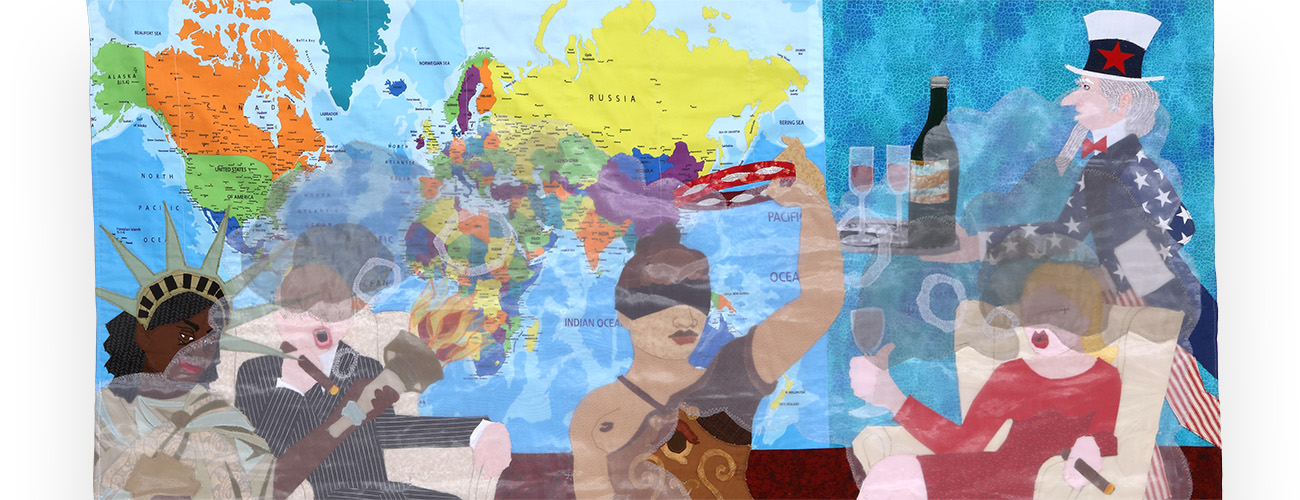Dawn Williams Boyd
How can quilts made by Black women change the way we tell the history of abstract art?
Dawn Williams Boyd (American, born 1952), Smoke-Filled Rooms (detail), 2022, assorted fabrics and cotton embroidery floss, 60 × 59 1/2 inches, High Museum of Art, Atlanta, purchase with funds from Black Quilts and Contemporary Art Centennial Initiative, 2023.144. © Dawn Williams Boyd.
The real question should be why do white, male artists get the credit for the invention of art forms that they consciously appropriated from so-called Third World cultures. All they actually did was put a name tag on their art and write long, boring theses about why their resulting cultural theft is new and better than the original work that existed thousands of years before they were born.
Abstract art, like everything else, was invented on the African continent and disseminated throughout the world by the migration of African peoples. African Adinkra cloth, Bogolanfini cloth (known in the West as mud cloth), African raffia cloth, Tibetan beadwork, Navajo blanket weaving, and Islamic geometric designs, to name a few, are examples of abstract art that have existed for centuries.
The patterns employed by the Black female artists represented in the High’s Patterns in Abstraction exhibition are not original to these artists, nor to the white oppressors who benefited from their expertise, much less to Kandinsky and the other European artists of the early twentieth century to whom the invention of abstract art is attributed. The work made by these “modern” textile and abstract artists references work created by artists of diverse ancient cultures, thus debunking the accepted history of abstract art as having been entirely invented in 1910. Frankly, this “history” is as invalid as any art history that doesn’t begin where human art, culture, and technology began—ancient Africa.
